Here's the earliest example I have of Huntley Brown's work. It's from a 1961 issue of Maclean's magazine.
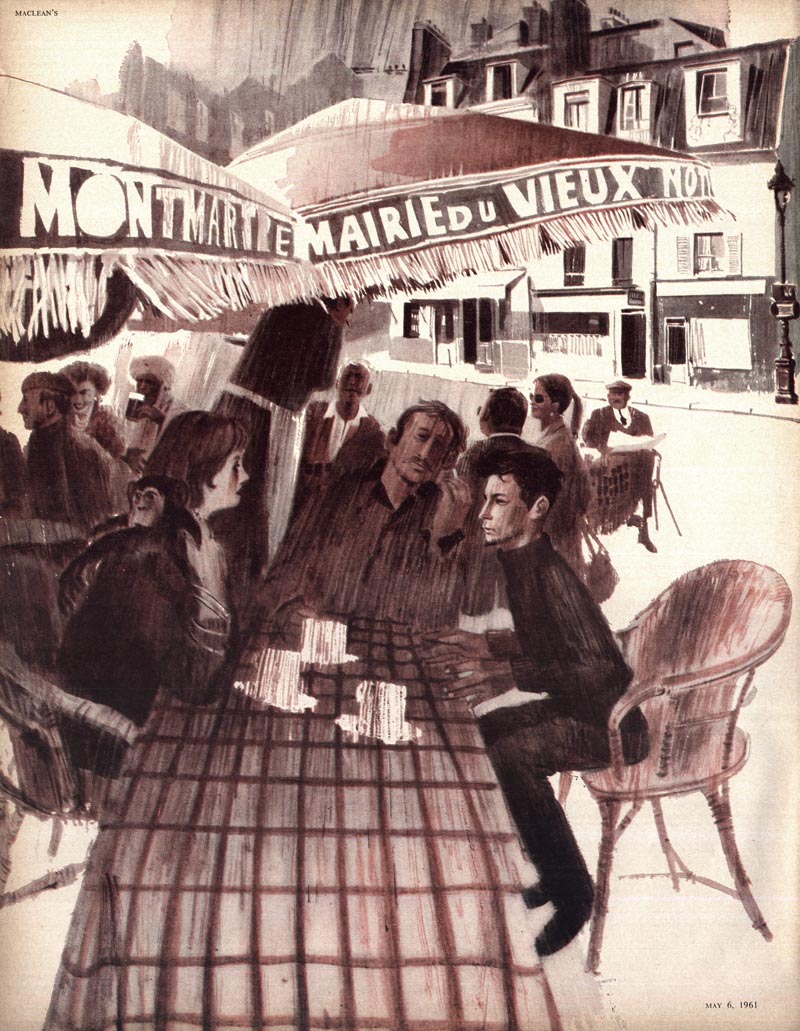
Huntley Brown's next stop was Templeton studios, where he worked for eight years. Brown was keeping busy in those days: he taught one day a week at the Ontario College of Art & Design, worked the other four days at Templeton, and did freelance in the evening and on weekends. Another Toronto artist, Don Sinclair, who was also in the early days of his career back then met Huntley Brown at Templeton. "Huntley was a talented guy and produced some superb stuff," said Don.
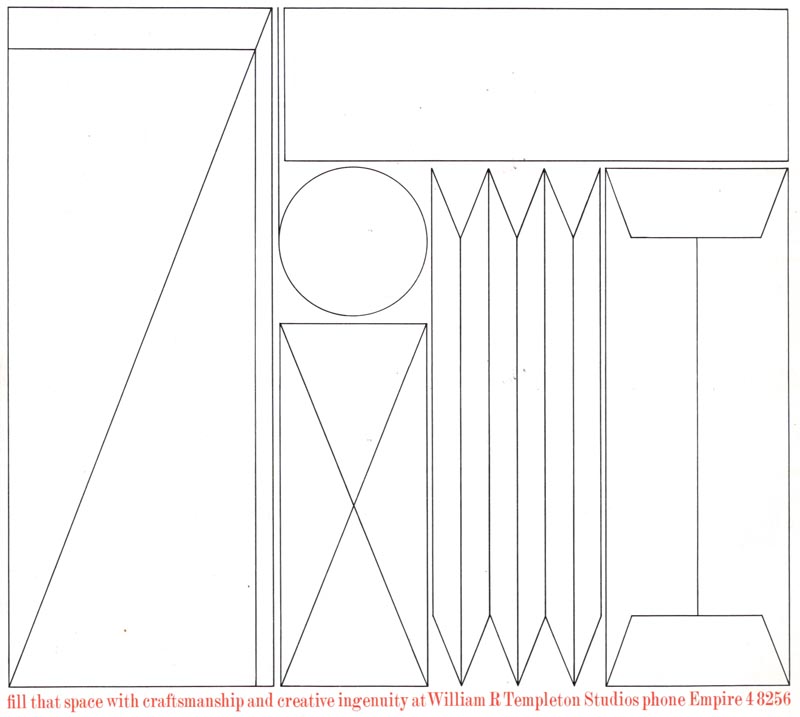
When I spoke on the phone with Huntley he said, "illustration was a great business until television came along and killed it. That took all the ad dollars out of the magazines, as everybody knows."
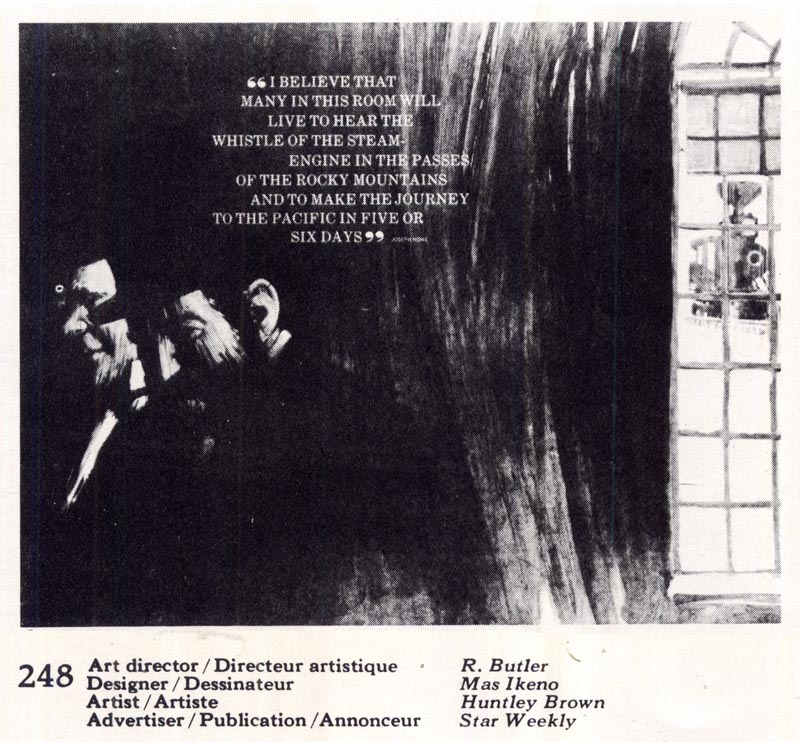
(Above and below: two Huntley Brown pieces included in the 1965 Canadian Art Directors Annual)
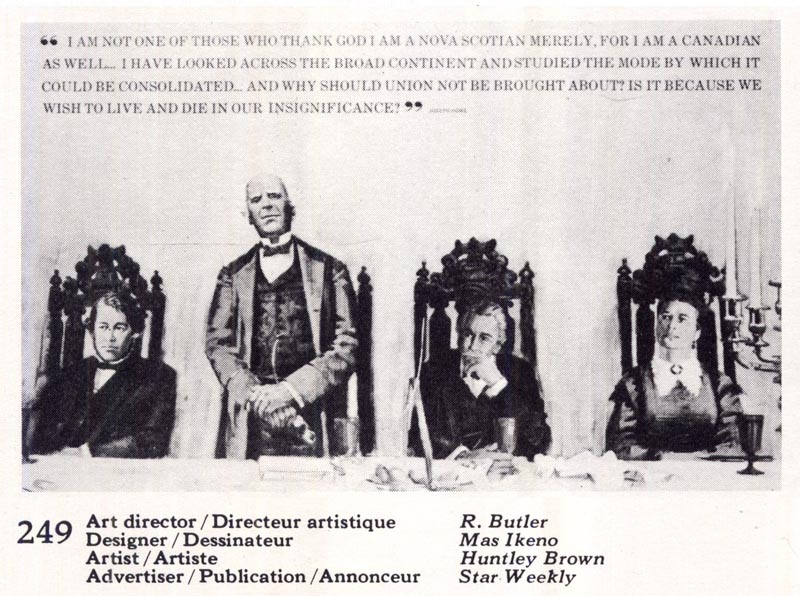
In the mid-60s, Brown did quite a bit of work for McClelland & Stewart's Canadian Illustrated Library, including this impressive cover for the "Heroes" volume.
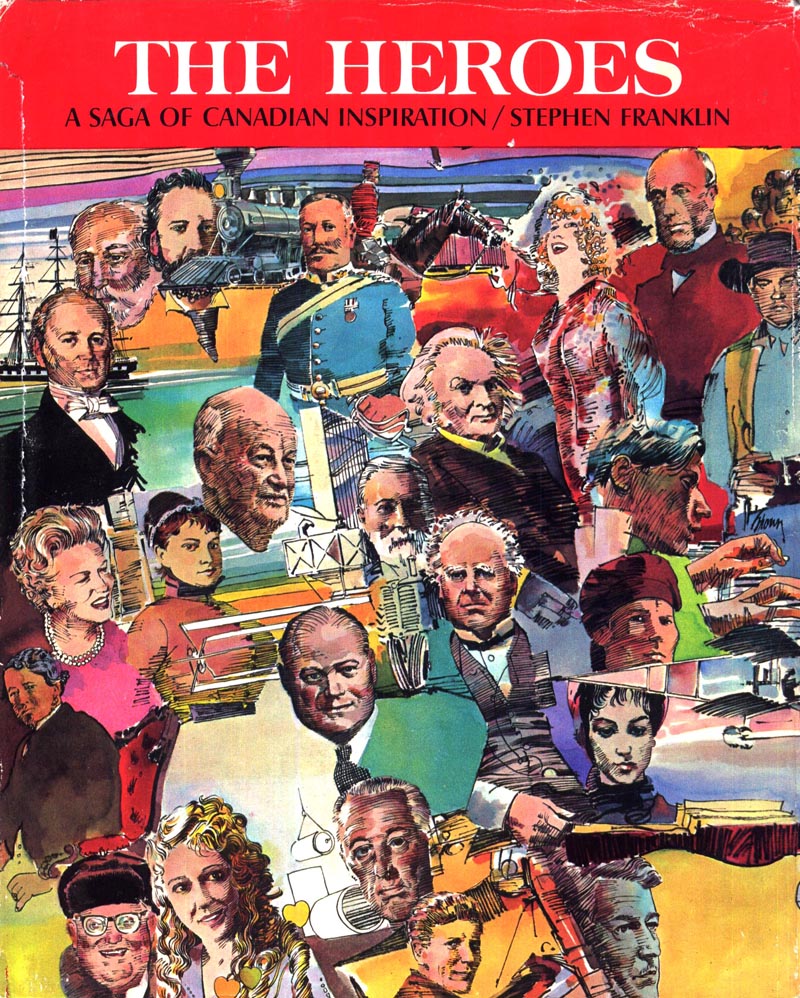
In the "Historic Headlines" volume, Brown illustrated the story of the famous 1960s FLQ mailbox bombing. In the three panel opening spread, he employed a very upbeat colour palette - but the imagery is absolutely chilling - A powerful juxtaposition that creates a jarring effect on the viewer.
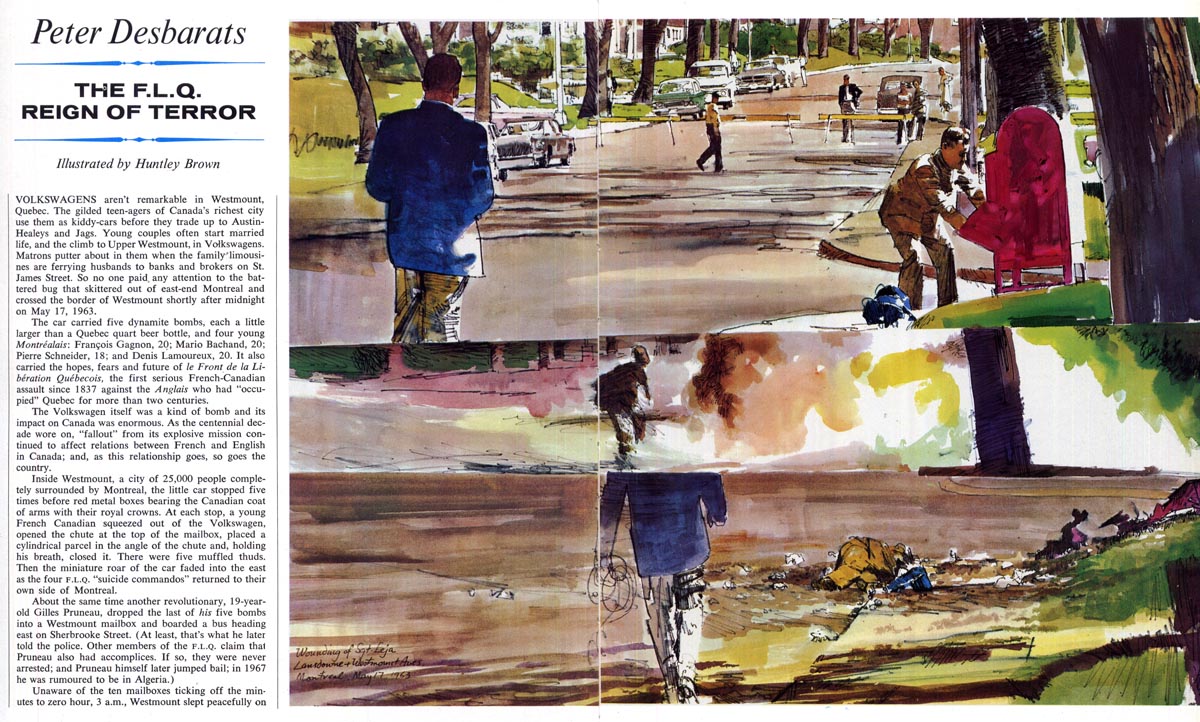
Also interesting: as mentioned, Brown chose to use sequential storytelling, giving us a "before-during-and-after" view of that terrible moment in Canada's history. It's not what one typically expects from a story illustration, but perhaps Brown was in a sequential art frame of mind at the time...
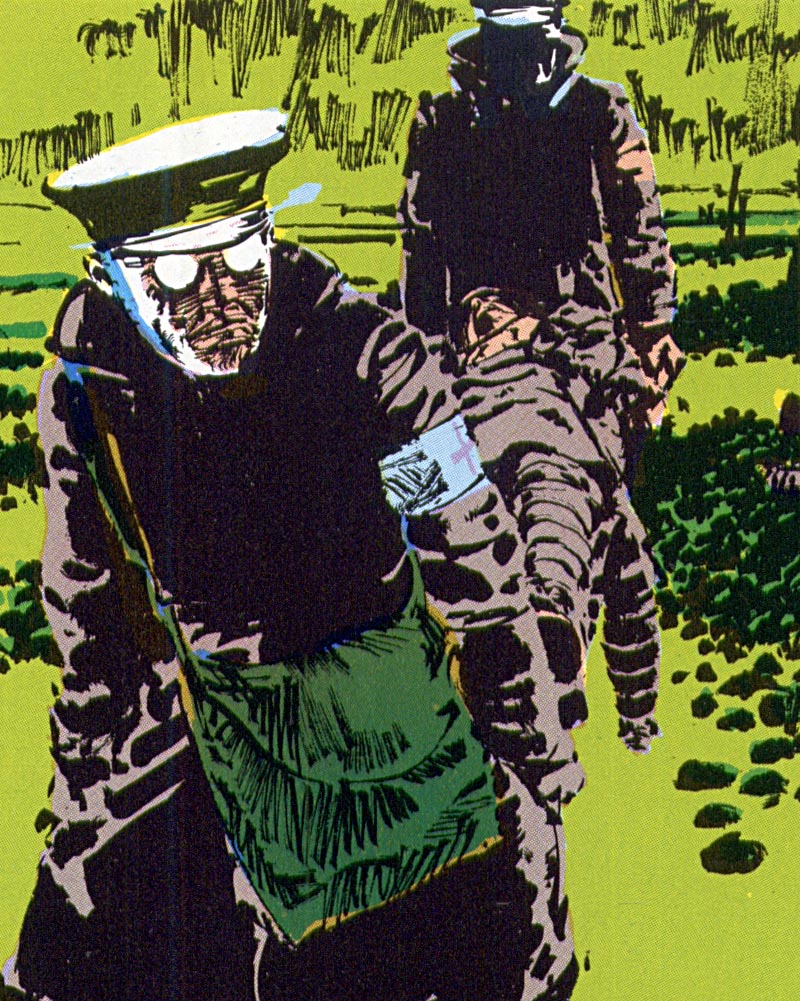
For the "Heroes" volume he created a series of four page narratives in comic book art - totalling twenty pages - recounting the stories of various famous Canadian heroes in a sort of "Classics Illustrated" format.

Brown recalled, "I did all the colour separations for that job as well and they were a mess!"

He remembered working in a comic strip format only one other time.

Brown did a full page strip about the moon landing for Star Weekly magazine, which he completed in one overnight rush deadline. Despite the speed at which he had to turn the job around, "That one turned out pretty good," he recalled.

Huntley Brown taught illustration at the Ontario College of Art & Design for 33 years. Don sinclair said, "We met again when we were teaching at OCAD."
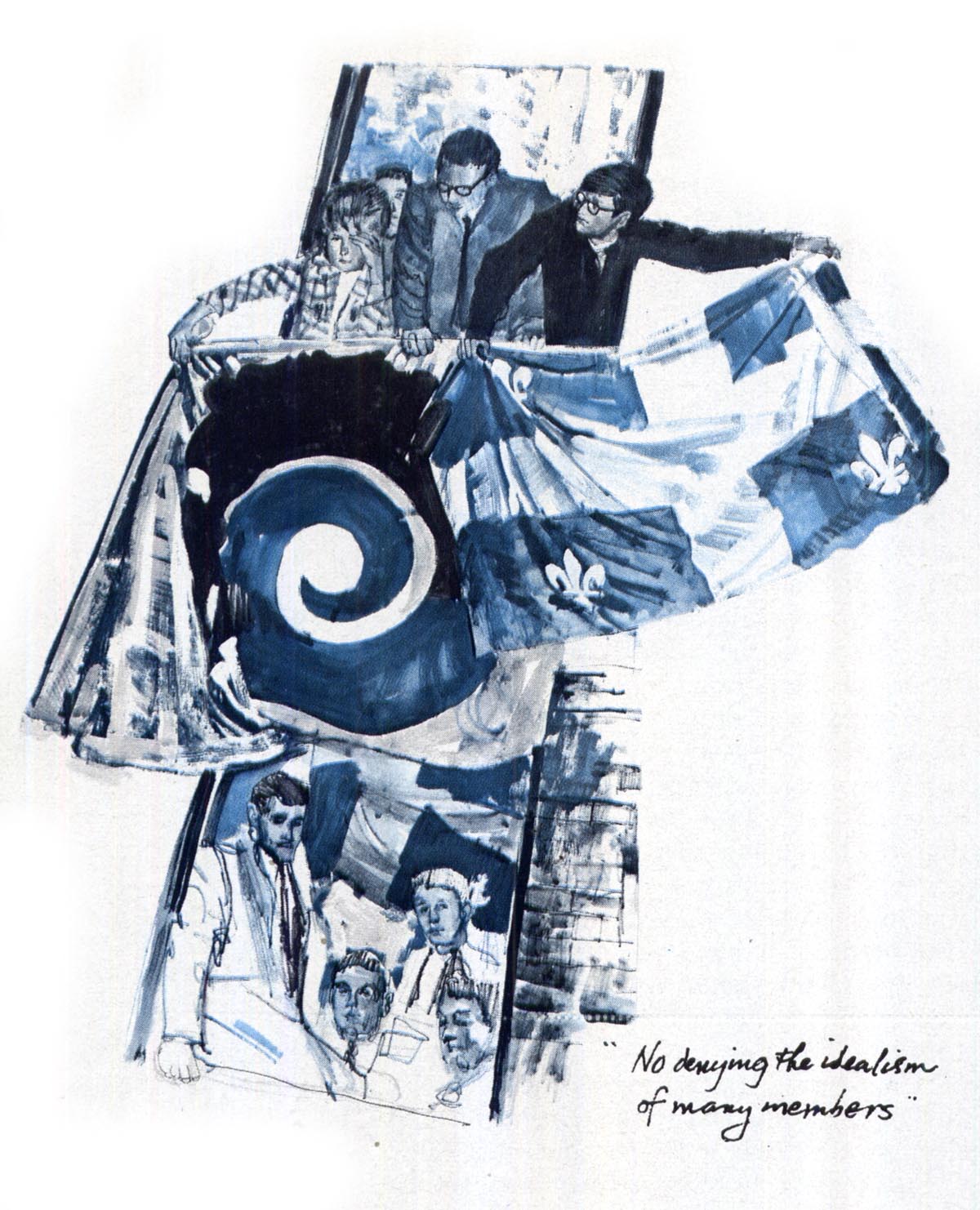
Former students Dan Milligan and René Milot, now two of the finest illustrators working in Canada, described Huntley Brown as a tough and intimidating task master who demanded the best from his students. Milligan said, "I had Huntley early on in my OCAD days. The guy kicked my ass [on] every assignment. In the end he took me to lunch and told me I was going to be fine."

Milot concurred; "Huntley 'ripped me a new one' [the] first week into my last year at OCA. As difficult as it was to accept, [his] comments opened my eyes and helped me so much."
Huntley Brown received the Lifetime Achievement Award from C.A.P.I.C. in 1997. Today he lives in the quiet community of Uxbridge, Ontario and paints landscapes, figurative work and portraits for himself or through word-of-mouth commissions.






0 comments:
Post a Comment